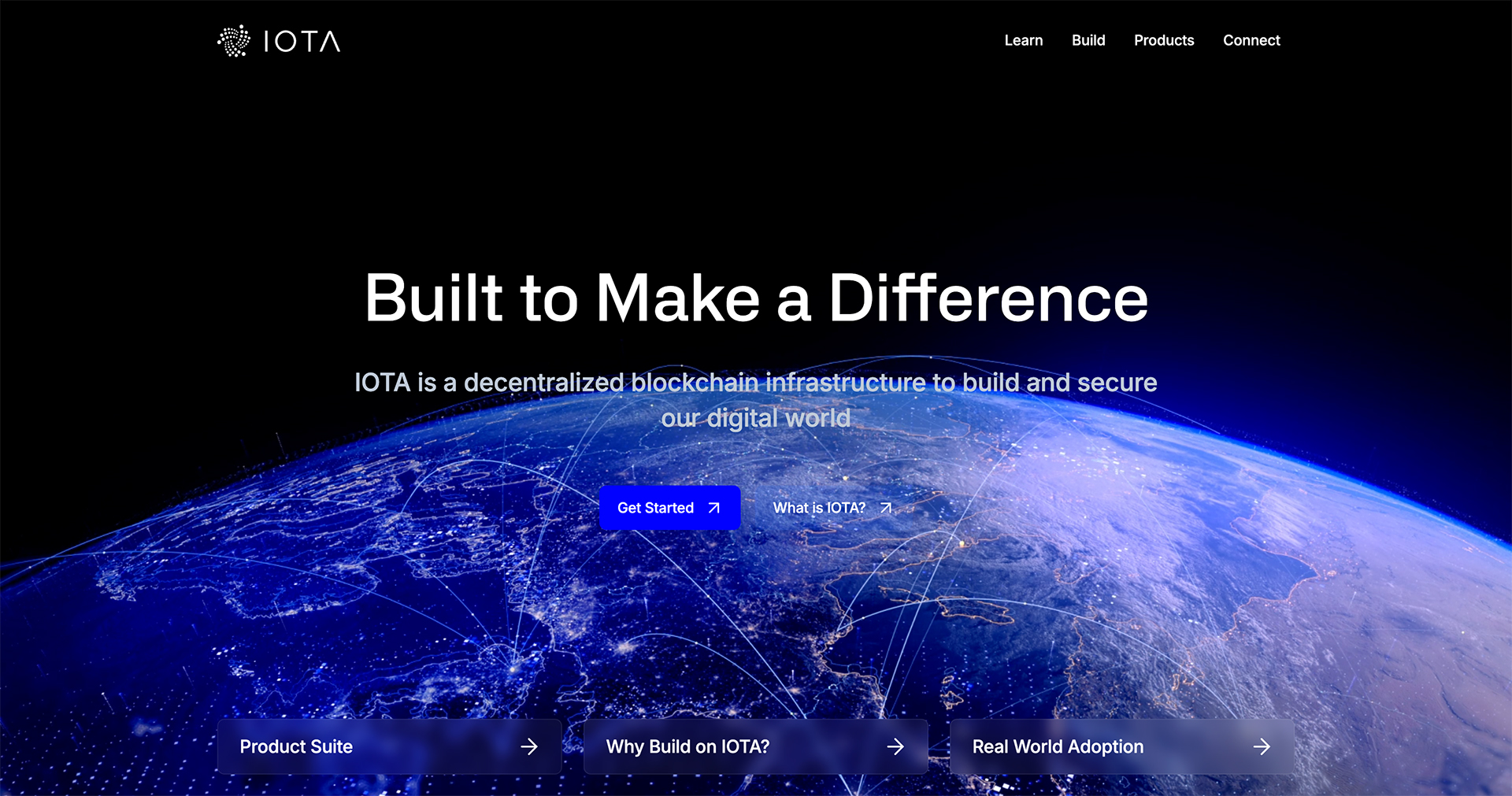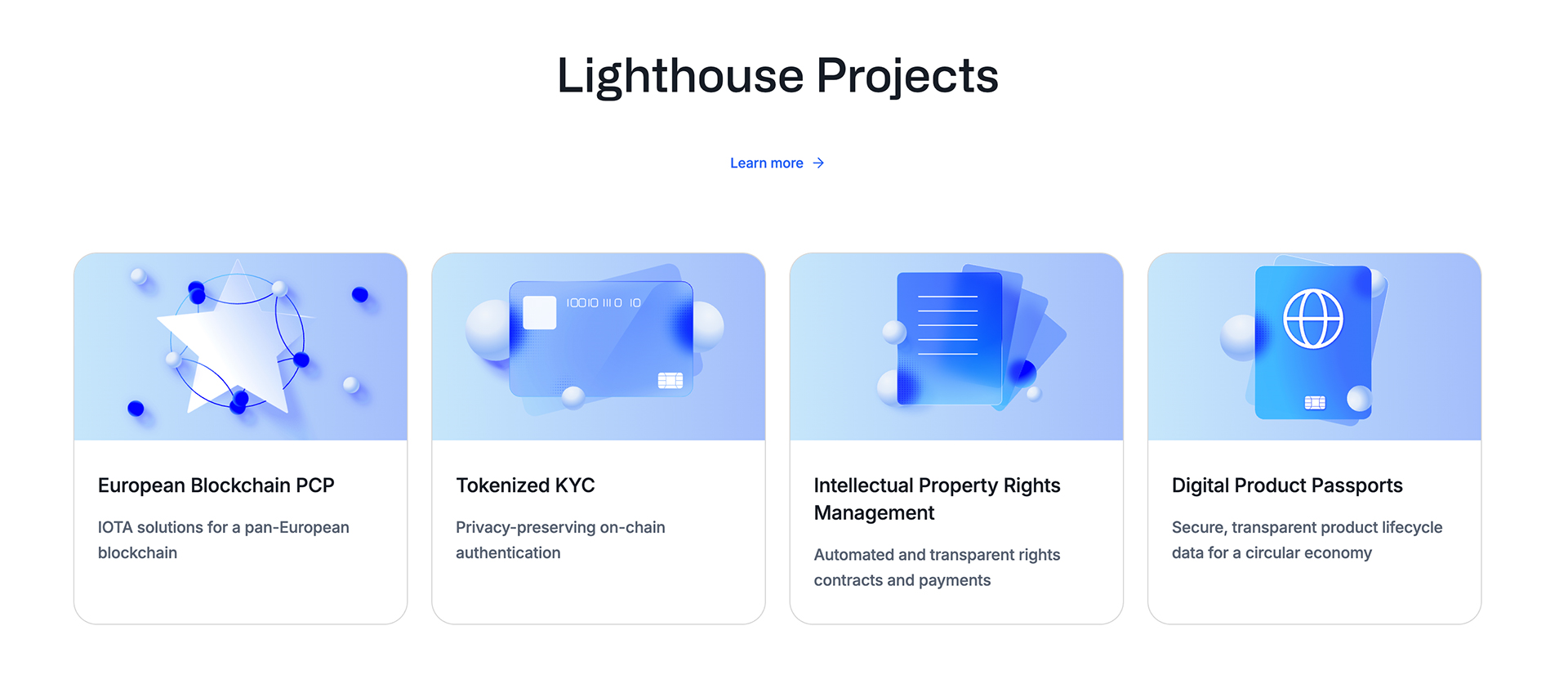What is IOTA?
IOTA is a cryptocurrency founded in 2015 by David Sønstebø, Sergey Ivancheglo, Dominik Schiener, and Dr. Serguei Popov. Originally designed as a revolutionary transaction protocol for the Internet of Things (IoT), IOTA has undergone a significant transformation. After years of developing its proprietary Tangle technology, the IOTA Foundation announced a strategic shift in 2024: IOTA 3.0 is now based on the Move Virtual Machine—the same technology used by Sui and Aptos.
Table of contents

The evolution of IOTA
The Tangle era (2015–2024)
IOTA began with a revolutionary vision: instead of relying on a traditional blockchain, the team introduced the Tangle—a Directed Acyclic Graph (DAG) structure. This innovation aimed to solve the main challenges of blockchains: high fees, slow transaction speeds, and limited scalability.

The Tangle principle was elegant: every new transaction had to approve two previous ones. This design promised a network that would become faster as usage increased—the opposite of traditional blockchains. Perhaps the most revolutionary idea was zero transaction fees, making IOTA ideal for microtransactions between IoT devices.
The project was driven by the vision of a “machine economy”: a future where machines trade autonomously. Self-driving cars pay for parking, sensors sell weather data, smart homes trade electricity—all without human intervention.
The harsh reality
Despite its elegant theory, IOTA faced major implementation issues. The most critical was the Coordinator—a centralized node meant to protect the network from attacks. Though intended as a temporary measure, it remained in place indefinitely, undermining decentralization.
Other key challenges included:
Performance issues during periods of low network activity
Security incidents and hacks
The long-promised Coordicide update never materialized
After nearly a decade, the IOTA Foundation had to accept that the Tangle had not delivered the expected results.
The shift to Move
In spring 2024, IOTA made a bold pivot: IOTA 3.0 would no longer be based on the Tangle, but instead adopt the Move Virtual Machine—the same core technology behind blockchains like Sui and Aptos.
Move is a programming language and execution environment originally developed by Meta (Facebook) for its Diem project. After Diem was abandoned, Move was embraced by other projects, demonstrating that Move-based blockchains can handle over 100,000 transactions per second with sub-second finality.
The decision to adopt Move was a pragmatic shift: instead of spending more years trying to fix the Tangle, IOTA chose a proven, high-performance foundation that aligned with its long-term vision.

Technical foundations
The new architecture
IOTA 3.0 represents a fundamental shift from its original design. Instead of using the Tangle (a DAG-based structure), IOTA now runs on a modern proof-of-stake blockchain. At the core of this upgrade is the Move Virtual Machine, which enables the development of secure, asset-oriented smart contracts.
Key features of the new architecture include:
Blockchain over DAG – a reliable structure enhanced with modern performance optimizations
Move VM – a smart contract platform designed for built-in safety and resource control
Parallel execution – multiple transactions processed simultaneously for better throughput
Object model – digital assets are treated as programmable, stateful objects
Performance and consensus
IOTA now uses a Byzantine Fault Tolerant (BFT) consensus model, similar to what is used in Sui. Validators stake IOTA tokens and are rewarded for honest participation in securing the network.
Core performance metrics:
Transactions per second: 50,000+
Finality: Under 1 second
Smart contract support: Full
Transaction fees: Minimal (no longer feeless)
Use cases
Despite the shift in underlying technology, IOTA’s primary use cases remain largely the same—with expanded potential thanks to Move’s capabilities. Areas like IoT communication, machine-to-machine micropayments, decentralized infrastructure, and data marketplaces stand to benefit from improved security, scalability, and programmability.

Internet of Things (IoT)
The vision of a machine economy lives on. With Move, smart contracts can represent complex business logic between IoT devices. For example, an electric car could automatically pay for charging, feed surplus energy back into the grid, and be compensated—all without human intervention.
Digital twins and supply chains
Move enables digital twins to be modeled as programmable objects that track the full lifecycle of a product. This opens new levels of transparency across supply chains—from raw material sourcing and production to recycling.
DeFi meets the real world
The integration of decentralized finance (DeFi) with real-world processes becomes possible. Machines could take out loans, insurance payouts could be triggered by sensor data, and industrial equipment could be tokenized.
Smart cities
IOTA could become the backbone of urban infrastructure: dynamic traffic management, peer-to-peer energy trading between citizens, digital identities, and automated public services.
IOTA Foundation
The non-profit IOTA Foundation, based in Berlin, remains the project’s organizational backbone. It coordinates technical development, maintains partnerships with companies like Bosch and Volkswagen, and drives the standardization process.
The Foundation sees the switch to Move as a necessary step to realize IOTA’s original vision. A key focus now is supporting developers in transitioning from Tangle to Move through training, documentation, and funding programs.
Challenges and criticism
The tech transition has sparked major controversy. Many long-time supporters feel betrayed, having believed in the Tangle vision for years. The community is now split between pragmatists and purists.
Main criticisms:
Loss of trust – years of unfulfilled promises
Identity crisis – IOTA is now “just another Move chain”
Migration hurdles – all existing apps must be rebuilt
Strong competition – Sui and Aptos are far ahead
The migration itself is a massive undertaking. All tokens must be moved to the new chain, and the entire ecosystem must be rebuilt from scratch.
Outlook and conclusion
As of 2025, IOTA stands at a critical crossroads. The move from the experimental Tangle to the proven Move architecture is both a concession and a fresh start. Whether IOTA can redefine its identity remains to be seen.
There’s potential: Move is technically sound, the IoT vision is still relevant, and IOTA’s industry partnerships provide a strong foundation. If IOTA can combine its domain expertise with Move’s execution power, it may well become the leading platform for the machine economy.
But the risks are real. The loss of community trust, strong competition, and technical migration hurdles pose serious challenges.
For new users and investors, IOTA is now a fundamentally different project. It’s no longer a novel DAG experiment but a Move-based enterprise blockchain with a focus on IoT. That may sound less radical—but it could be the more realistic path to success.
In the end, IOTA’s story is a reminder that even brilliant ideas can fail in practice—but also that admitting failure and pivoting takes courage. Whether this bold pivot leads to success is a story still being written.
Frequently asked questions about IOTA
What is the current price of IOTA?
The current price of IOTA is $0.083. Over the past 24 hours, the price is down 4.22%, with a trading volume of $56.04B. IOTA is the 187th largest cryptocurrency by market cap, currently at $350.37M.
Is it worth investing in IOTA?
The price change of IOTA (IOTA) over one year is currently -71.54%, making IOTA a bad investment in hindsight. Whether this trend will continue in the future depends on many external factors such as supply and demand. Past price trends are no indicator of future performance.
Where can I buy IOTA?
The best and most reputable crypto exchanges for buying IOTA include ones such as Kraken and Coinbase. You can find more in our comparison of crypto exchanges.
Which IOTA wallet is the best?
The best hardware wallets for IOTA are Ledger Nano X, BitBox02 and Trezor Model T. In our opinion, the best software wallet for IOTA is the Zengo app. You can find more in our comparison of crypto wallets.
What was the all-time high of IOTA?
The IOTA (IOTA) cryptocurrency all-time high is $5.25. This price was reached on Dec 19, 2017. The current price is $0.083, a difference of -98.42% from the all-time high.
Who has invested in IOTA?
IOTA's early investors include institutional investors and venture capitalists (VCs) such as Blocktree Capital, Outlier Ventures.
How many IOTA (IOTA) are currently in circulation?
There are currently 4.21B IOTA (IOTA) in circulation. The total amount of IOTA in circulation represents all coins and tokens that have already been distributed and are therefore held in the wallets of private individuals, companies or institutions.
What is the Total Value Locked (TVL) of IOTA?
The Total Value Locked of IOTA (IOTA) is currently $2.23M. This value includes all assets locked on the blockchain or in DeFi protocols. With a market cap of $350.37M, this results in a ratio of market cap to TVL of 156.83.